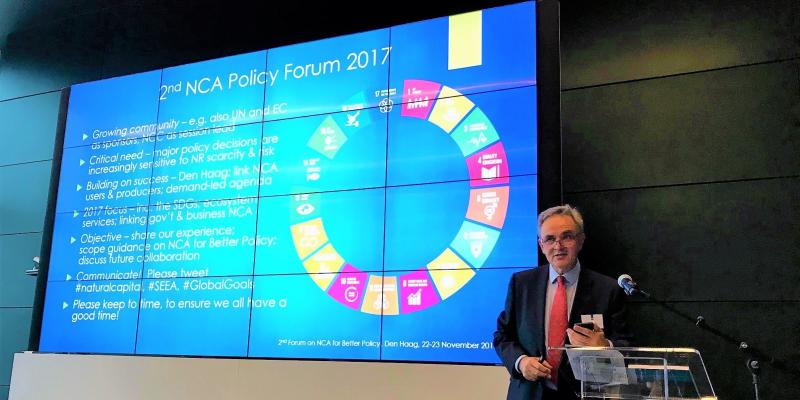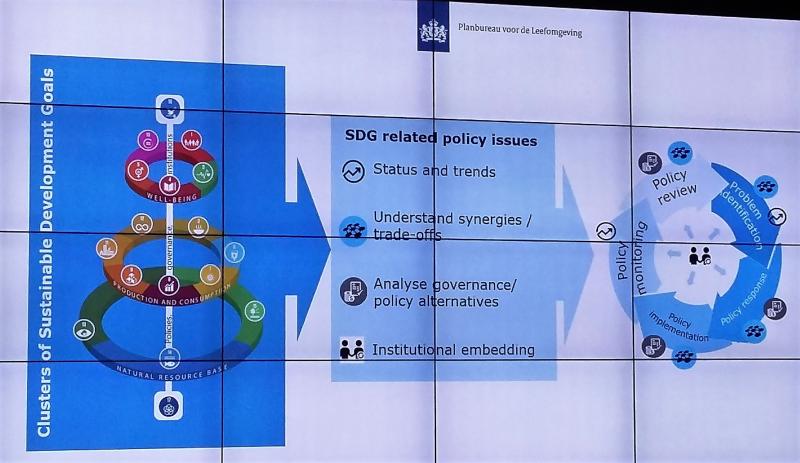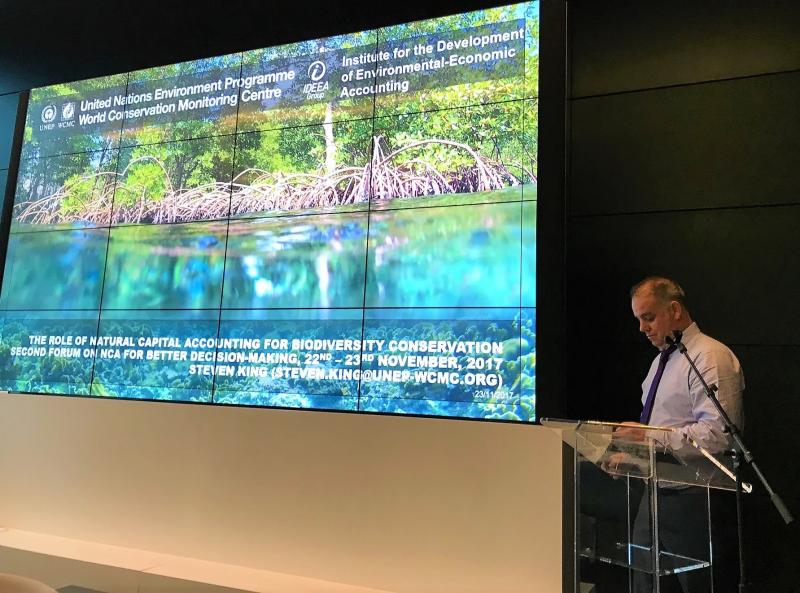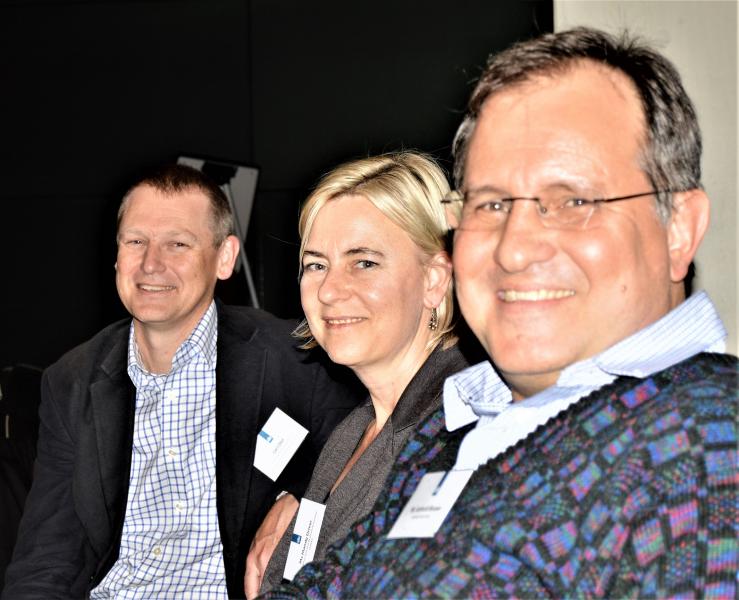
What is the link between natural capital accounting (NCA) and realizing the Sustainable Development Goals (SDGs)? This was the overarching question at the Second Forum on Natural Capital Accounting for Better Policy, hosted by the Dutch Ministry of Foreign Affairs in The Hague. The Forum brought together 60 participants from 20 countries to share their experiences on using NCA, and how to take the next step in making it more relevant for policy.

Bram Edens, senior statistician at the UN Statistics Division, spoke about how accounts can be a useful tool to monitor progress against SDG indicators, with the System for Environmental Economic Accounting (SEEA) providing a structure that delivers consistent, comparable information from one year to another. This was seen to be especially important when there is no method for measurement yet worked out for more than one third of SDG indicators.
But NCA can do much more than monitoring – it helps the whole ‘policy cycle.’
Trade-offs are an unavoidable part of policy making; it’s a question of fully understanding what’s possible, and how to minimize any negative impacts in order to come up with the best overall outcome. After all, the overall aim of the SDGs is to “leave no one behind.” Arjan Ruijs from PBL Environmental Assessment Agency, Netherlands showed how natural capital accounts can inform these debates and highlight relevant synergies between the different SDGs and at different stages of policymaking.
Policy application of NCA for public and private sectors
Interspersed throughout the programme were case studies of where accounts are beginning to inform policy, including: the revised water masterplan in Botswana; forest policy in the UK; land use planning in Rwanda; and, in the private sector, the coffee business in Indonesia.
Indeed, the involvement of representatives from the private sector was a valuable addition to the agenda and a direct result of actions agreed at the first policy forum in 2016.
Hannah Pitts from the National Capital Coalition showed through her highly visual presentation how NCA could prove to be the tool for integrating business with the SDGs, using accounts information to make the link between industry emissions, air quality, and health indicators (SDG12: Responsible consumption and production).
This led into a wider discussion on the role of NCA in green growth and poverty reduction strategies. To be effective, NCA needs to better cover spatial and distributional issues, as national-level averages can be biased against certain people and places. Participants recognized that poverty reduction is rarely solved by technocratic ‘planning’ alone. Rather, it is a highly political process involving business and civil society too, meaning that NCA must also look beyond government by expanding its accessibility to many, including poor communities.

On the second day of the forum, case studies focused on the application of NCA to SDG15, or “Life on Land.” In England, forest accounts have been a revelation for board members’ understanding of forest assets, the many values they produce, and consequently where to invest. In Australia, timber, water and biodiversity accounts are profiling potential trade-offs that need to be managed. In South Africa, several policy entry points have been identified for ecosystem accounts to guide spatial planning, improved water security, investments in ecosystem restoration, and the expansion of protected areas. And in Uganda, chimpanzee accounts can monitor progress against the country’s National Biodiversity Strategy and Action Plan, internationally agreed Aichi targets, and tourism policy.
Further examples from Botswana, Indonesia, Rwanda and Australia set out in more depth the role of NCA in government decision-making. In addition, a detailed session on modelling trade-offs using natural capital accounts, with an example from Costa Rica looking at the impact of tax exemptions on use of electric vehicles, engaged the statisticians and economists in the room and brought participants to the final session on next steps.

The way forward
The overall picture that emerged from the Forum was that NCA is well placed to help monitor and implement the SDGs. A crucial component of this is linking natural capital to poverty alleviation to achieve green and inclusive growth – a subject that needs to be explored further. NCA also needs to be further integrated into budget planning and investment decisions, to effectively coordinate economic policies and the sustainable management of natural capital.
Another area for further work is strengthening the communications around NCA, not only to inform how to communicate and engage with audiences about existing accounts in a relevant way, but also to be a driver for deciding what accounts to prepare in the future.
Other take-aways include the need to strengthen links between business-level and national-level natural capital accounting, as well as the finance community. More research is needed on making the crucial links between NCA and the SDGs; guidance materials are already being developed to help this process along.
Ultimately, the second forum was another successful event with a high level of participation and optimism about what is beginning to be achieved, but also a realistic view on what still needs to be done, and plenty of ideas for the third policy forum in a year’s time.
